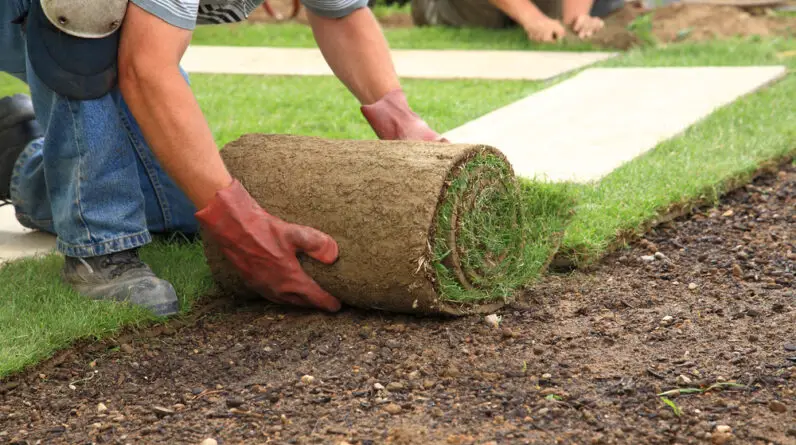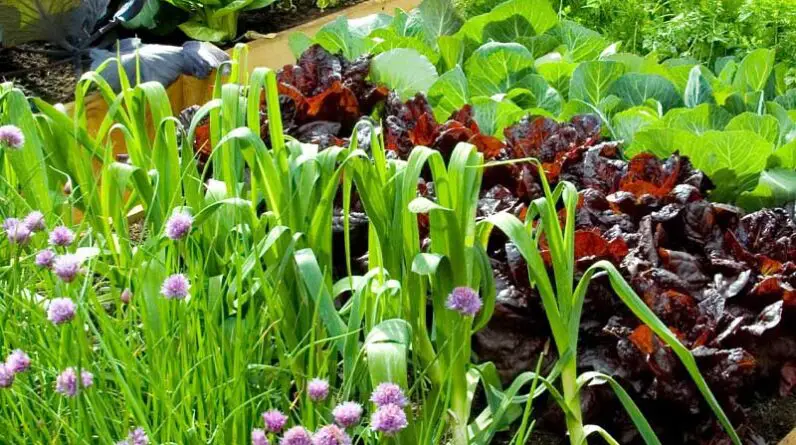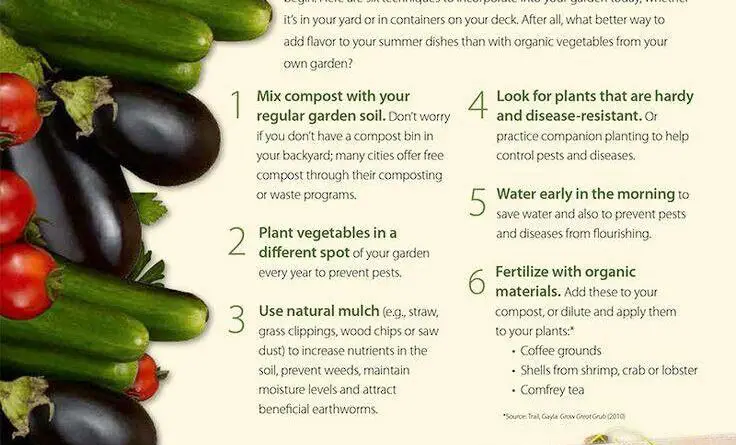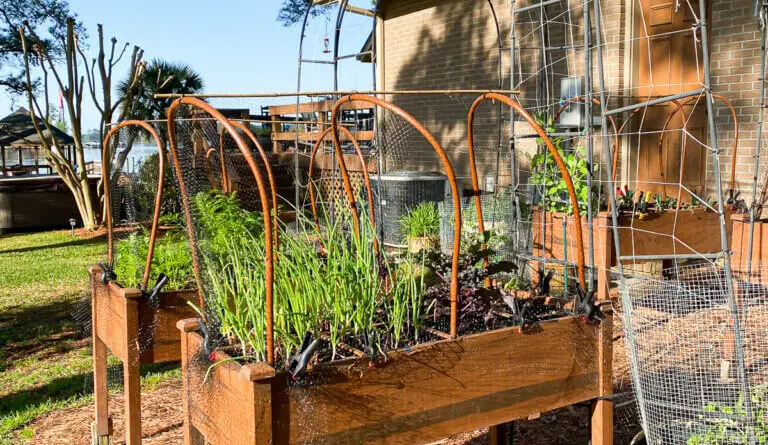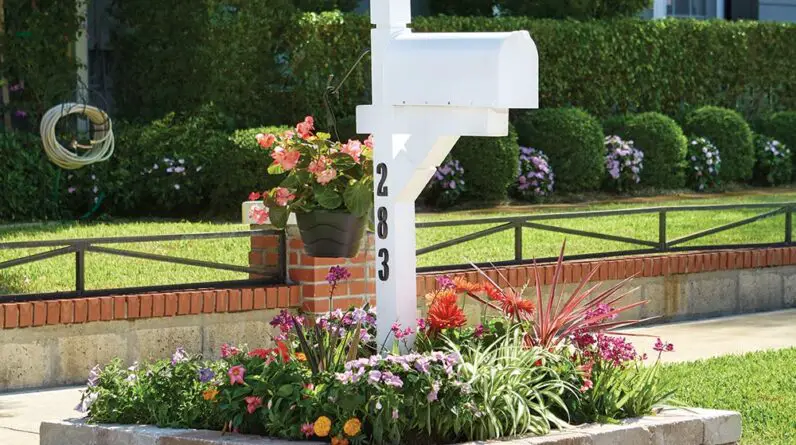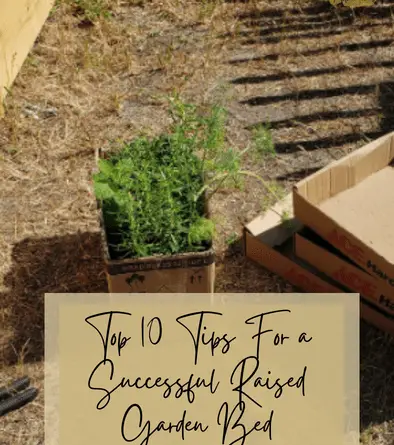
Introduction
Welcome to my article on 10 essential raised bed gardening tips! Whether you’re a seasoned gardener or a beginner, raised bed gardening is a great way to grow your own fruits, vegetables, and flowers. In this article, I will walk you through the basics of raised bed gardening and provide you with 10 key tips to help you get started and maximize your success.
What is raised bed gardening?
Raised bed gardening is a method of growing plants in defined, elevated beds rather than directly in the ground. These beds are typically constructed using wood, bricks, or other materials and filled with nutrient-rich soil. By elevating the soil, raised beds provide better drainage, aeration, and soil quality, which can lead to healthier plants and higher yields.
Benefits of raised bed gardening
There are numerous benefits to practicing raised bed gardening. Firstly, the elevated beds make it easier to reach and maintain your plants, reducing strain on your back and knees. Additionally, the improved soil quality allows for better root growth and nutrient uptake, resulting in healthier plants. Raised beds also provide better control over weed growth and drainage, reducing the risk of disease and promoting optimal plant growth.
In the following sections, I will delve deeper into each of these benefits and provide you with more specific tips to ensure your success with raised bed gardening. Let’s get started!
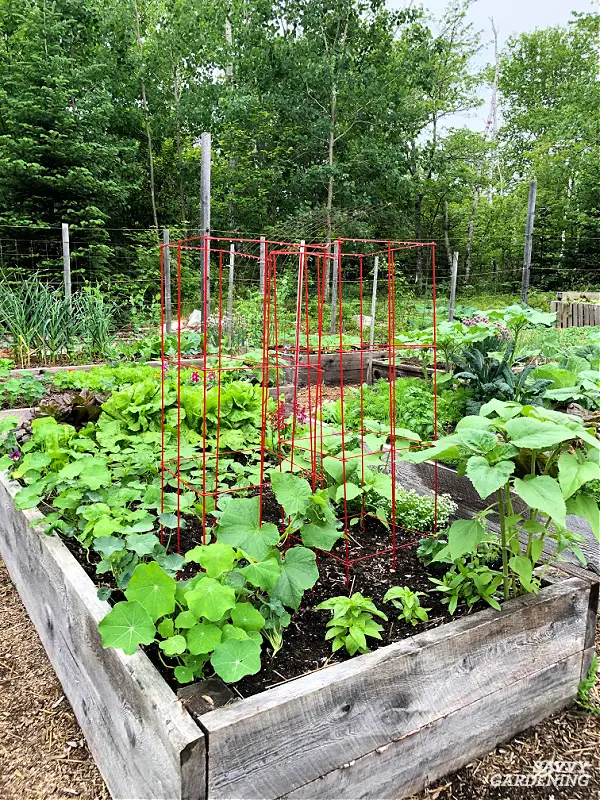
This image is property of i0.wp.com.
Choosing the Right Location
When starting a raised bed garden, one of the most important factors to consider is the location. This can greatly impact the success of your garden, so it’s crucial to choose wisely.
Consider sunlight exposure
Firstly, you’ll want to find an area that receives ample sunlight throughout the day. Most vegetables and herbs require at least six hours of direct sunlight, so opt for a spot that isn’t overshadowed by trees or buildings. This will ensure that your plants can thrive and produce an abundant harvest.
Evaluate soil conditions
Secondly, assess the quality of the soil in the chosen location. Raised bed gardens can be filled with a mix of soil and compost, but it’s important to ensure that the existing soil underneath is not overly compacted or contaminated. Dig a small hole and examine the texture and drainage before proceeding.
Ensure proper drainage
Lastly, adequate drainage is crucial for the health of your plants. Avoid low-lying areas that may collect water and cause root rot. If your selected location tends to retain water, consider adding drainage pipes or creating a slope to redirect excess water away from the garden bed. This will help prevent waterlogged soil and promote healthy plant growth.
By carefully considering sunlight exposure, evaluating soil conditions, and ensuring proper drainage, you’ll be well on your way to a successful raised bed garden. Happy gardening!

This image is property of growinginthegarden.com.
Building a Raised Bed
Selecting the materials
When it comes to building a raised bed for your garden, selecting the right materials is crucial. You want to choose materials that are durable, weather-resistant, and safe for your plants. I recommend using untreated wood, such as cedar or redwood, as they are both long-lasting and chemical-free. Alternatively, you can opt for composite materials, which are also a great option as they are resistant to rot and pests.
Determining the optimal size and shape
The size and shape of your raised bed will largely depend on the space you have available and your gardening needs. A common rule of thumb is to make the bed no wider than 4 feet, as this allows for easy access to the center of the bed. As for the length, it can be as long as you desire. Keep in mind that taller beds are easier to tend to, especially for those with limited mobility.
Assembling the raised bed
Assembling a raised bed is a relatively straightforward process. Start by laying out the materials in the desired shape and size. Next, secure the corners with screws or nails, ensuring they are level and sturdy. Finally, line the bottom of the bed with a weed barrier or landscape fabric to prevent weeds from growing up into the bed. You can then fill the bed with a mixture of soil, compost, and other organic matter.
By following these essential tips, you’ll be well on your way to creating a successful raised bed garden. Happy gardening!
Preparing the Soil
One of the most crucial steps in successful raised bed gardening is properly preparing the soil. By taking the time to prepare the soil, you can provide your plants with the ideal environment for growth and ensure a bountiful harvest. Here are some essential tips to help you get started:
Removing sod or weeds
Before you start filling your raised bed with soil, it’s important to clear away any existing vegetation. This includes removing sod or weeds that may be present in the area. By doing this, you’ll prevent competition for nutrients and promote healthier plant growth.
Adding organic matter
To improve the fertility and overall quality of your soil, it’s recommended to add organic matter. This can include compost, well-rotted manure, or leaf mold. Organic matter helps retain moisture, improves drainage, and provides essential nutrients for your plants.
Amending soil pH if necessary
Some plants have specific soil pH requirements for optimal growth. It’s important to test your soil’s pH and make necessary amendments if it’s too acidic or alkaline. For example, adding lime can help raise pH levels, while sulfur can lower them. By adjusting the soil pH, you’ll create a favorable environment for your plants to thrive.
Preparing the soil is just the first step in creating a successful raised bed garden. By removing sod or weeds, adding organic matter, and amending soil pH if necessary, you’ll be well on your way to cultivating healthy and productive plants. So grab your gardening tools and get ready to enjoy the rewards of your hard work!
Planting and Layout
When it comes to raised bed gardening, proper planning and layout are crucial for a successful harvest. Here are some essential tips to consider when deciding on plant selection, arranging your plants, and creating companion planting combinations.
Deciding on plant selection
Before you start planting, take time to research which plants are best suited for your raised bed. Consider factors such as sunlight, water requirements, spacing, and the growing season. Choose a variety of vegetables, herbs, and flowers that complement each other well and will thrive in your specific climate. This will help maximize the productivity of your raised bed garden and prevent any overcrowding.
Planning the arrangement
Once you’ve chosen your plants, it’s time to plan out the arrangement in your raised bed. Take into account the height, growth habit, and spacing requirements of each plant. Arrange taller plants towards the back, medium-sized plants in the middle, and shorter plants in the front. This will ensure that all plants receive adequate sunlight and won’t shade each other.
Creating companion planting combinations
Companion planting is a beneficial gardening technique where certain plants are grown together to enhance growth and deter pests. Before planting, research which plants have positive or negative effects on each other. For example, planting marigolds alongside tomatoes can repel aphids. Experiment with different combinations to find what works best for your raised bed garden.
By following these planting and layout tips, you can create a thriving raised bed garden that yields bountiful harvests of healthy and delicious produce. Happy gardening!
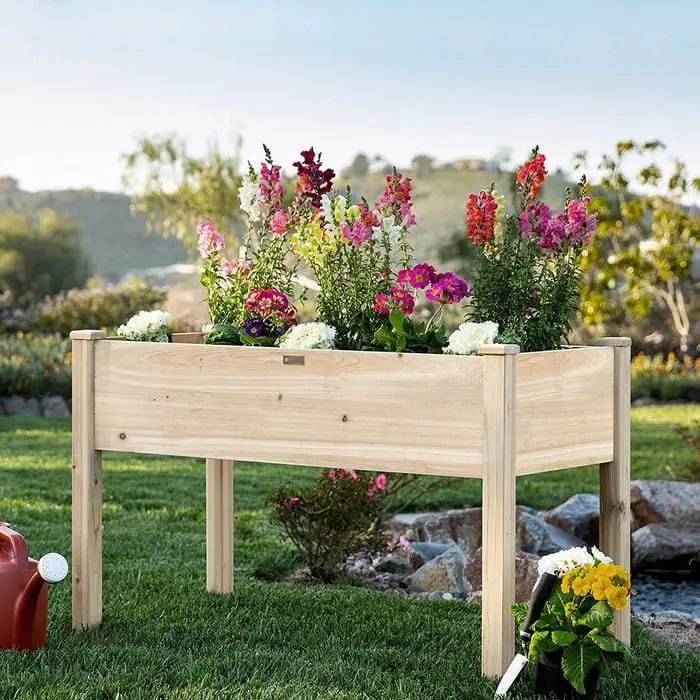
This image is property of www.tasteofhome.com.
Watering and Irrigation
One of the most important aspects of raised bed gardening is proper watering and irrigation. To ensure that your plants thrive and produce a bountiful harvest, it is crucial to establish a watering routine, choose appropriate irrigation methods, and prevent overwatering or underwatering.
Establishing a watering routine
When it comes to watering your raised bed garden, consistency is key. Start by determining the water needs of your plants and create a schedule that aligns with those requirements. This will help you avoid the common mistakes of either overwatering or underwatering your plants. Consider factors such as the type of soil, the climate in your area, and the specific needs of each plant.
Choosing appropriate irrigation methods
There are several irrigation methods you can use in your raised bed garden, including drip irrigation, soaker hoses, or hand watering. Each method has its own advantages and disadvantages, so choose the one that works best for you and your garden. Drip irrigation, for example, delivers water directly to the plants’ roots, promoting efficient water usage and reducing the risk of fungal diseases.
Preventing overwatering or underwatering
Overwatering or underwatering can be detrimental to your plants’ health. To prevent these issues, pay attention to signs of excessive moisture or dehydration in your plants. Adjust your watering routine accordingly, and make sure not to water when the soil is still wet. Additionally, proper soil preparation, such as adding organic matter to improve drainage and water retention, can help prevent overwatering and underwatering.
By following these essential tips for watering and irrigation in raised bed gardening, you will nurture healthy plants that thrive in a controlled environment. Remember, a well-hydrated garden is a happy and productive garden.
Weed and Pest Control
One of the challenges of raised bed gardening is weed and pest control. However, with the right strategies in place, you can easily keep your plants healthy and thriving. In this section, I will share some essential tips to help you combat these common gardening issues.
Implementing organic weed control methods
Weeds can quickly overtake your raised beds, stealing nutrients and water from your precious plants. To combat this, I recommend implementing organic weed control methods. One effective way is to mulch your beds with organic materials like straw or wood chips. This not only suppresses weeds but also helps retain moisture in the soil. Additionally, regularly hand-pulling weeds or using a hoe to remove them when they are small can prevent them from spreading and taking over your beds.
Using physical barriers
Another effective strategy is using physical barriers to keep pests out. You can install wire mesh or netting around your beds to deter rabbits, squirrels, or other critters from feasting on your plants. Additionally, floating row covers can be used to protect your crops from common garden pests like aphids or caterpillars.
Identifying and treating common pests
It’s important to regularly inspect your plants for signs of pests. Common garden pests include aphids, slugs, and snails. If you notice any damage or infestation, take action immediately. You can use organic insecticidal soaps or homemade remedies like garlic or neem oil sprays to deter pests. Additionally, introducing beneficial insects like ladybugs or lacewings to your garden can help control pest populations naturally.
By implementing these weed and pest control methods, you can ensure a healthy and thriving raised bed garden. Happy gardening!
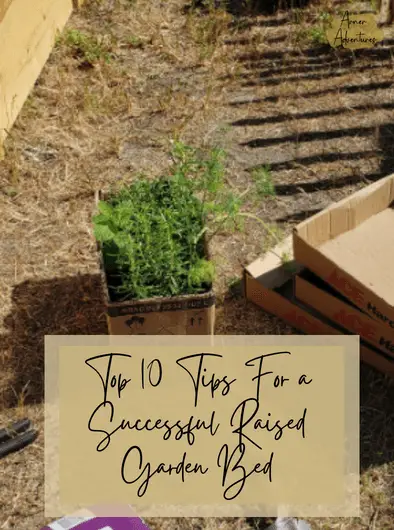
This image is property of i0.wp.com.
Conclusion
After exploring these 10 essential raised bed gardening tips, I hope you feel inspired and motivated to start your own raised bed garden. By implementing these tips, you can create a thriving and productive garden space right in your backyard.
Summary of raised bed gardening tips
To recap, we discussed the importance of choosing the right location for your raised bed, ensuring proper drainage, using high-quality soil and compost, and providing adequate water and sunlight for your plants. We also touched on the benefits of mulching, the importance of regular maintenance and pest control, and the value of crop rotation in preventing disease and maintaining soil fertility.
Encouragement to start a raised bed garden
Remember, gardening is a wonderful hobby that brings many joys and rewards. By starting a raised bed garden, you can experience the satisfaction of growing your own fresh and healthy produce, while enjoying the beauty of nature in your own backyard. Don’t be intimidated if you’re a beginner – with these tips and a little bit of patience and dedication, you’ll be well on your way to becoming a successful raised bed gardener.
So, gather your tools, choose your plants, and get your hands dirty – there’s no better time to start your raised bed garden adventure than today! Happy gardening!


